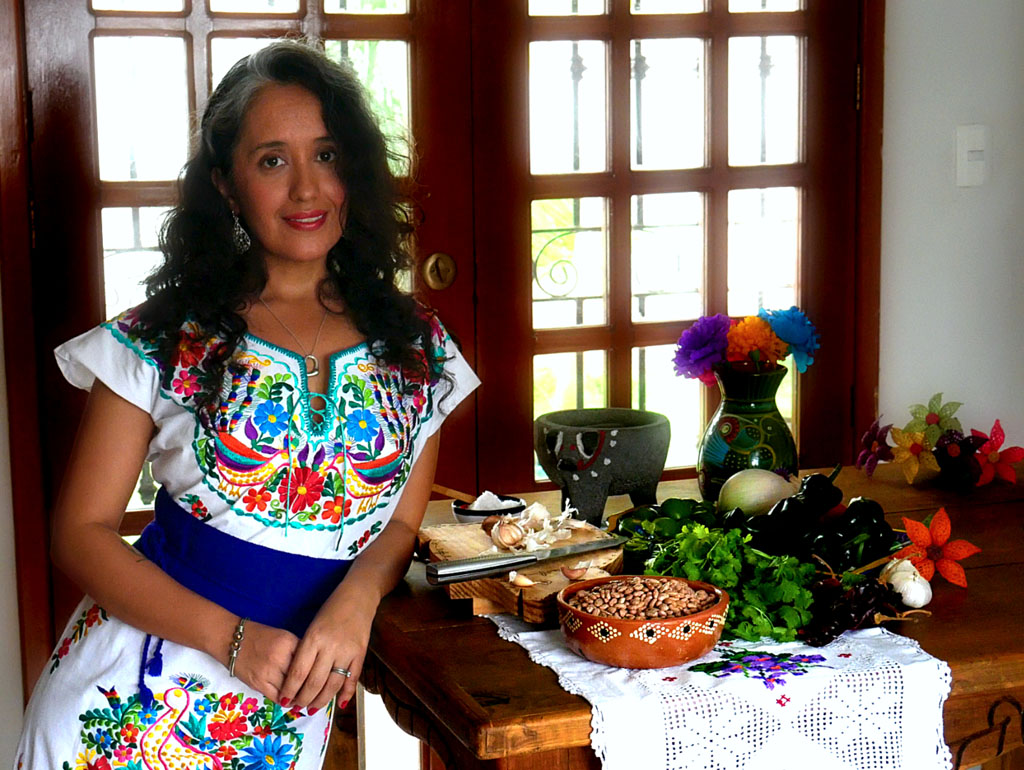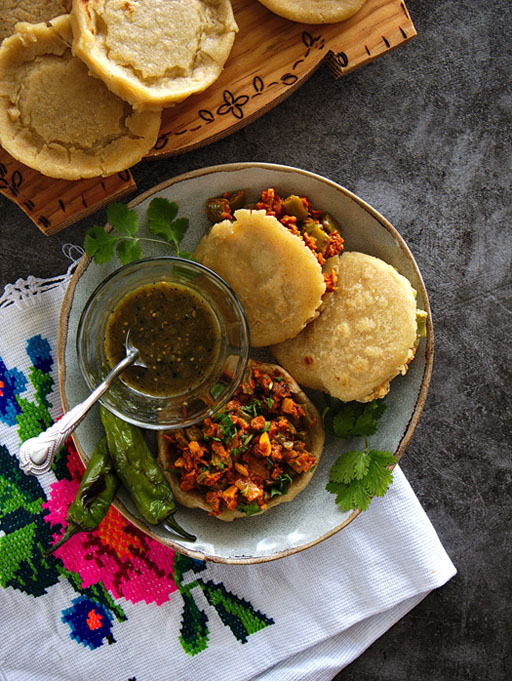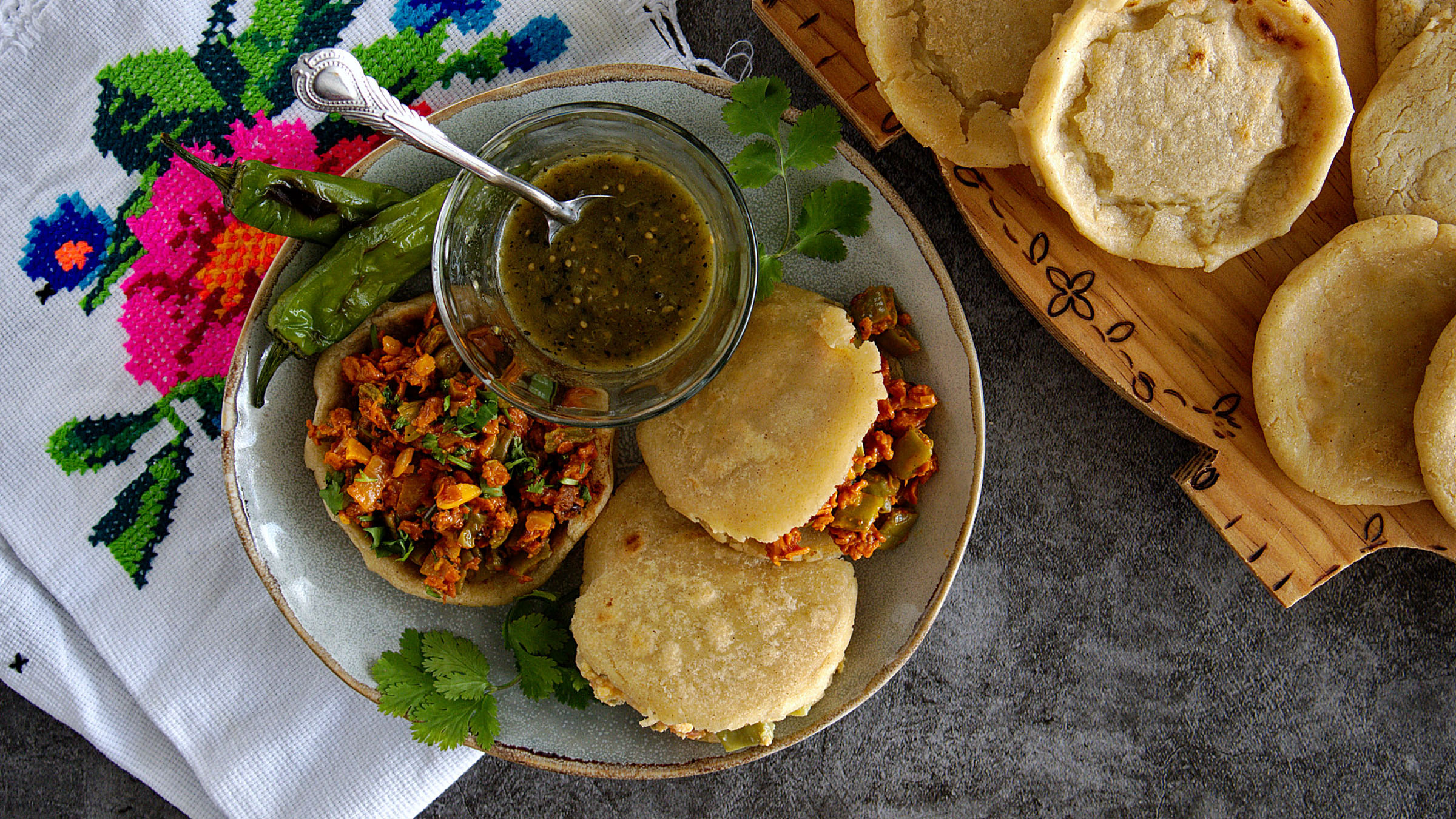Traditional Mexican cuisine might have a reputation for being heavy on the meat, but Nancy Lopez-McHugh of YouTube channel Mexican Made Meatless proves otherwise. In this instalment of The Tastemakers, she prepares sopes and gorditas – traditional Mexican snacks made with ground corn dough – using delicious vegetarian toppings.

What’s your cooking mantra?
My mantra – or what guides me in my recipe creation and cooking – is definitely the use of fresh and natural ingredients, lots of flavour and nothing overly complicated. Also, much like Tita in the movie Like Water for Chocolate, I’m also a strong believer in cooking with lots of love in your heart. That loving vibe you put into your food and cooking will be felt by those you feed.
What are some of your favourite vegetarian Mexican dishes?
There are so many, and people would be surprised to find out just how many traditional Mexican dishes are meatless. Chiles rellenos, chilaquiles with a fried egg, chili and cheese tamales, pozole, my mom’s vegetarian enchiladas. Also, I’d never turn down a big helping of refried beans with some warm corn tortillas, cheese and a roasted salsa verde.
What tricks do you use to make meat-based Mexican classics vegetarian, while staying close to the authentic version?
I first make sure that all the traditional seasonings and as many of the original non-meat ingredients as possible are included in the recipe. From there I start working with alternatives to the meat, to try to emulate the flavours and sometimes textures of that particular dish. Mushrooms, soy, certain vegetables and vital wheat gluten are all great replacements for meat.

Both sopes and gorditas are what we call antojitos in Mexico, sort of like snacks. It doesn’t matter the time of day or occasion, sopes and gorditas can be enjoyed whenever you have a craving for either.
For the uninitiated, what are gorditas and sopes, and what are the differences between the two?
Sopes and gorditas are both made from a ground corn dough called ‘masa’. They both start off with a small ball of masa that is shaped into a small round disk, which is then cooked on a comal, or griddle.
For sopes, the edges are pinched up to create a little ‘boat’ or vessel for the toppings. Gorditas are left in the round disk shape, but they’re sliced to create a pocket – much like pita bread.
Both can be eaten just cooked on the comal, or they can also be fried. Sopes are stacked with toppings, and gorditas are stuffed with fillings. The toppings and fillings are countless, ranging from meats to lots of vegetarian and even vegan options.
On what times of day or occasions would you eat them?
Both sopes and gorditas are what we call antojitos in Mexico, sort of like snacks. We eat them as snacks, appetisers and main meals. It doesn’t matter the time of day or occasion, sopes and gorditas can be enjoyed whenever you have a craving for either.
What are some traditional fillings, and how do you put your own creative spin on them?
There are so many, and each region or state in Mexico has its own variations, but some traditional fillings would be chicharron (pork cracklings), chorizo sausage (with or without potatoes), nopales (cactus pads), beans, carnitas, chicken tinga, barbacoa, cochinita pibil, and all sorts of meats and meat stews.
Gorditas even exist in a number of sweet variations, which are great with a cup of strong Mexican coffee.
The creative spin I put on both my sopes and gorditas really is just finding delicious and inventive ways to replace the traditional meat fillings and toppings. But usually the traditionally vegetarian and vegan toppings are what I choose to put on my sopes and gorditas.
Check out the fillings recipes:
Nopales con huevos (cactus with eggs)
Nopales with vegan chorizo
#staysafe #stayathome #selfisolation #selfisolationactivities














Sorry, the comment form is closed at this time.